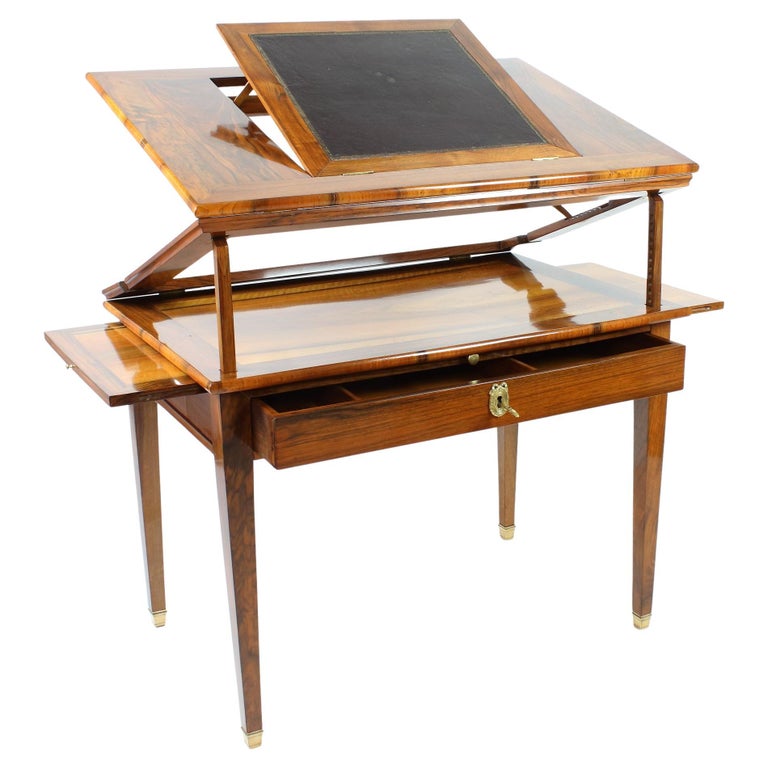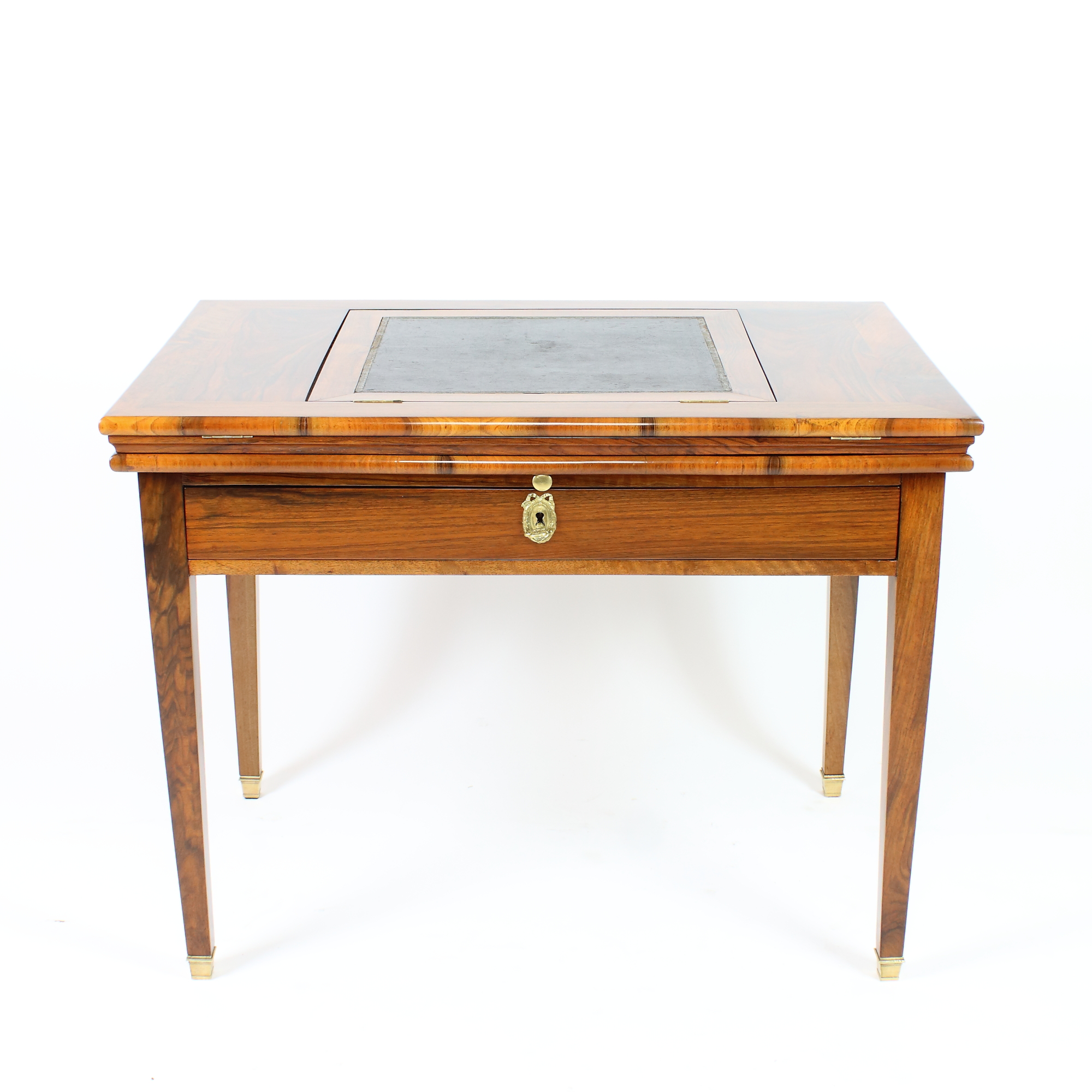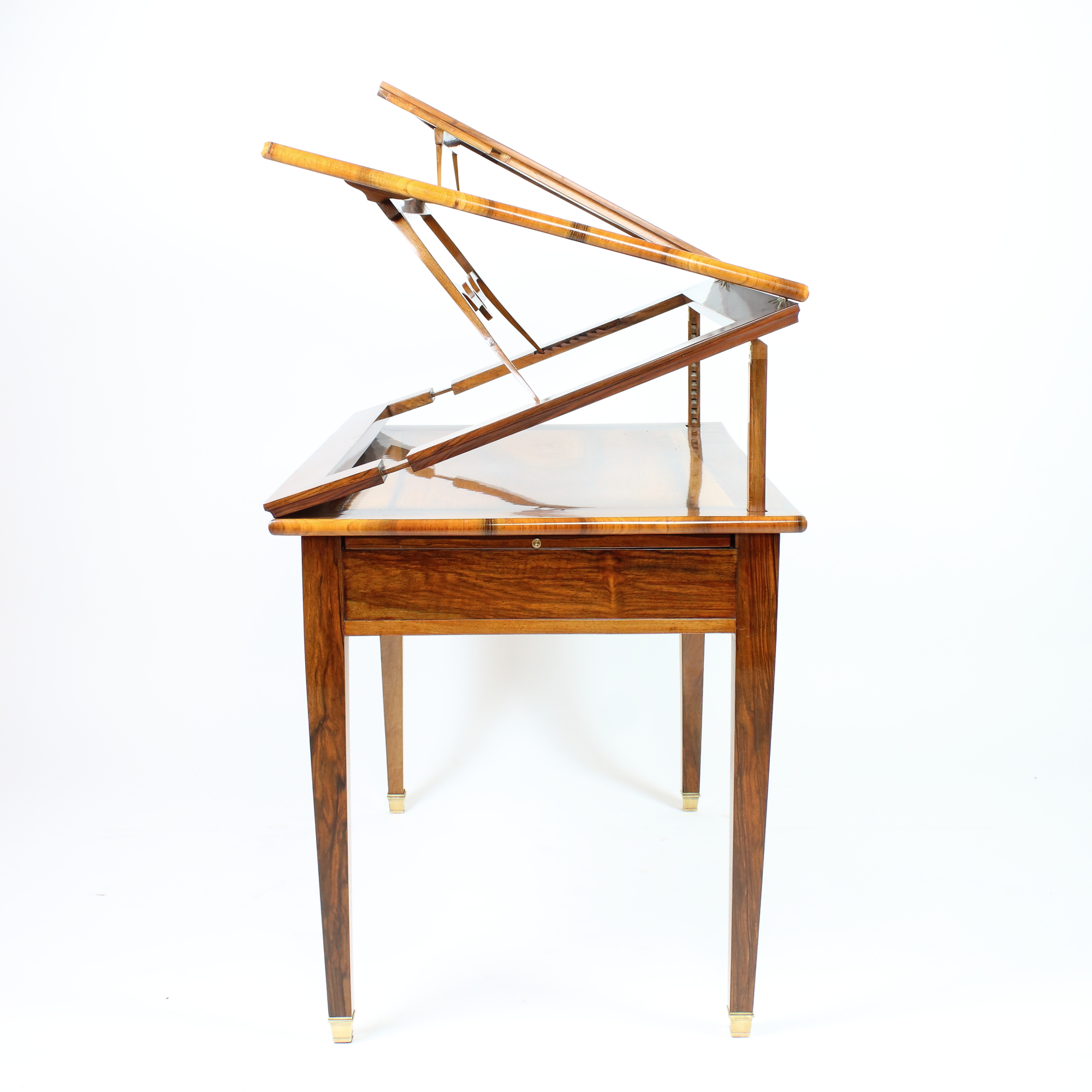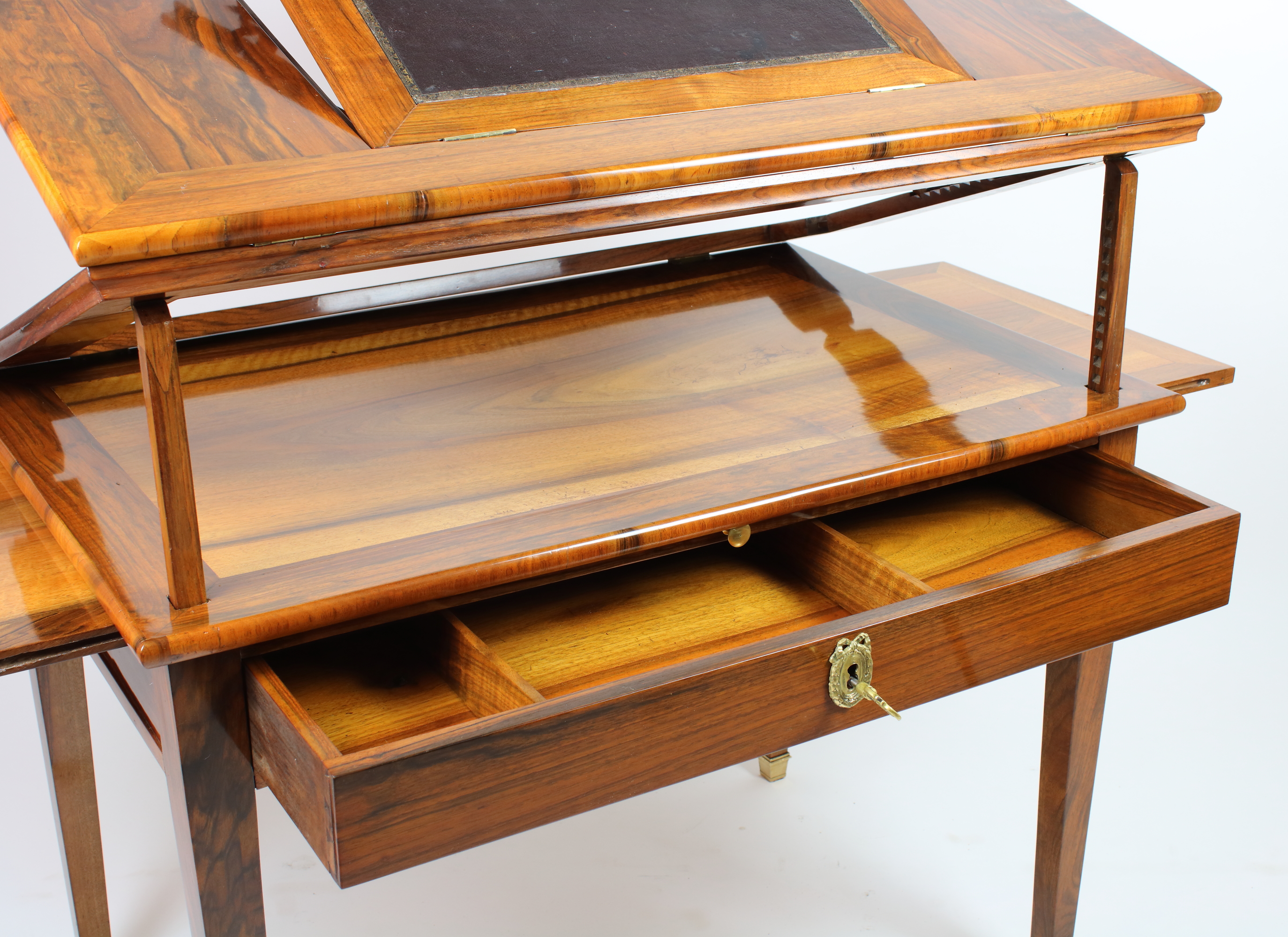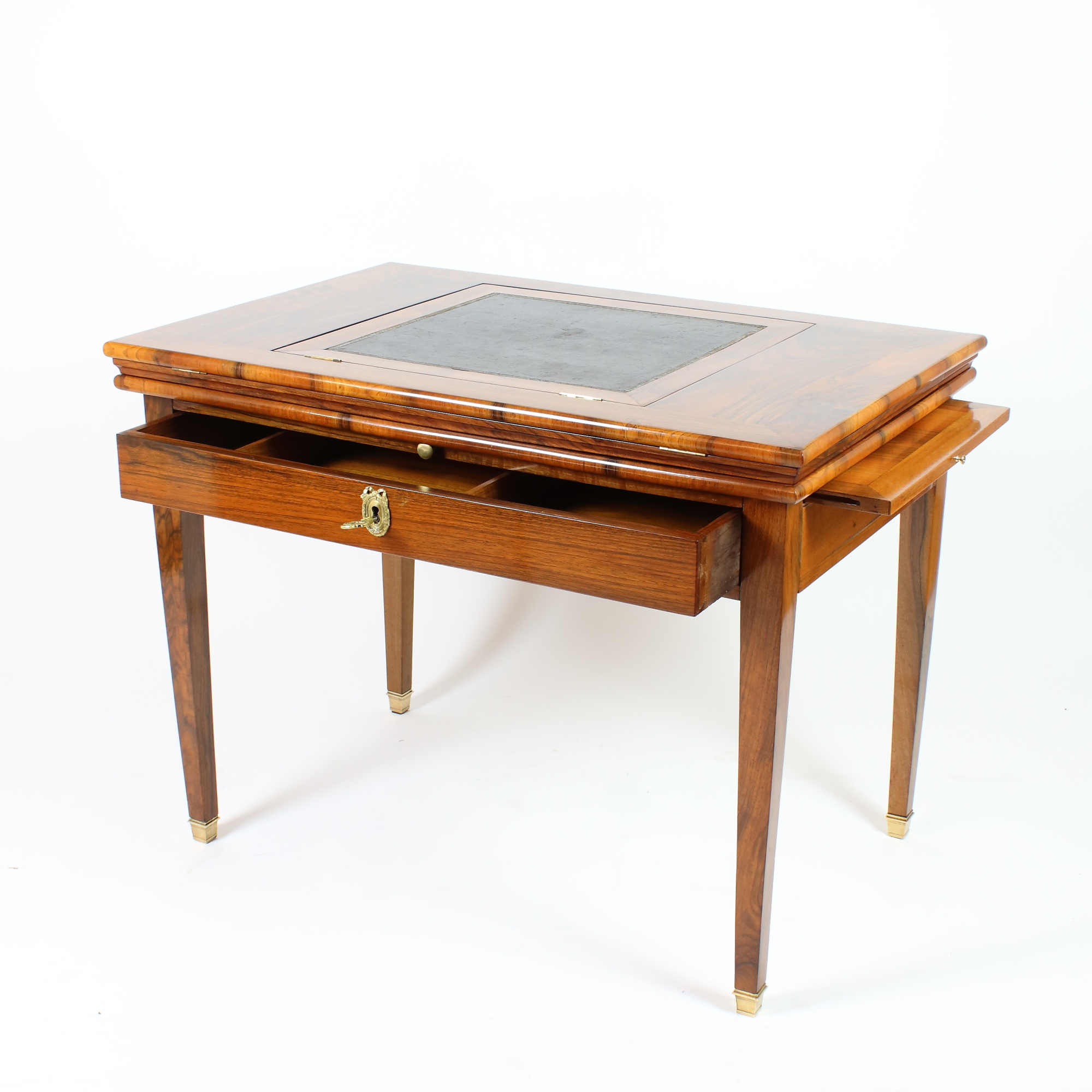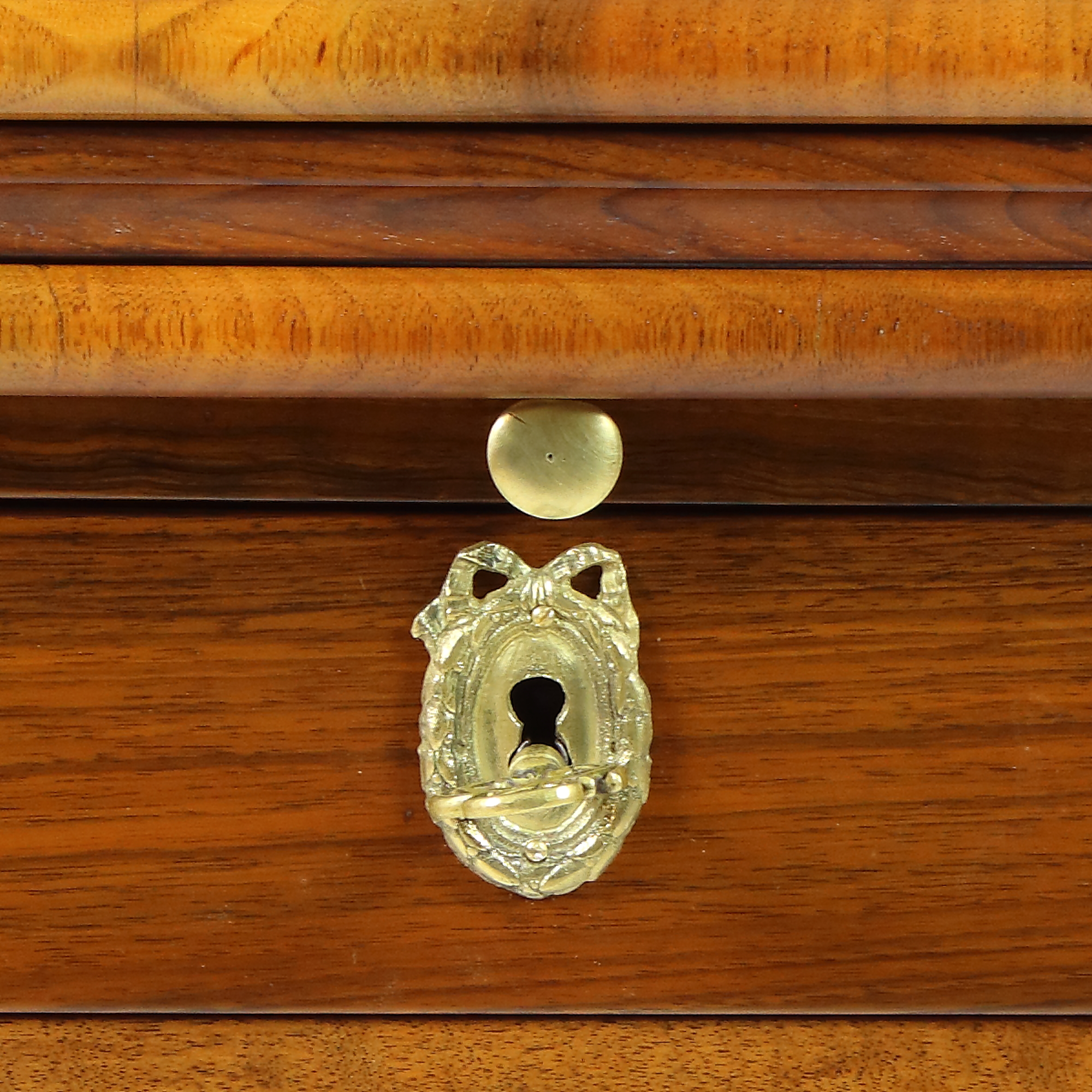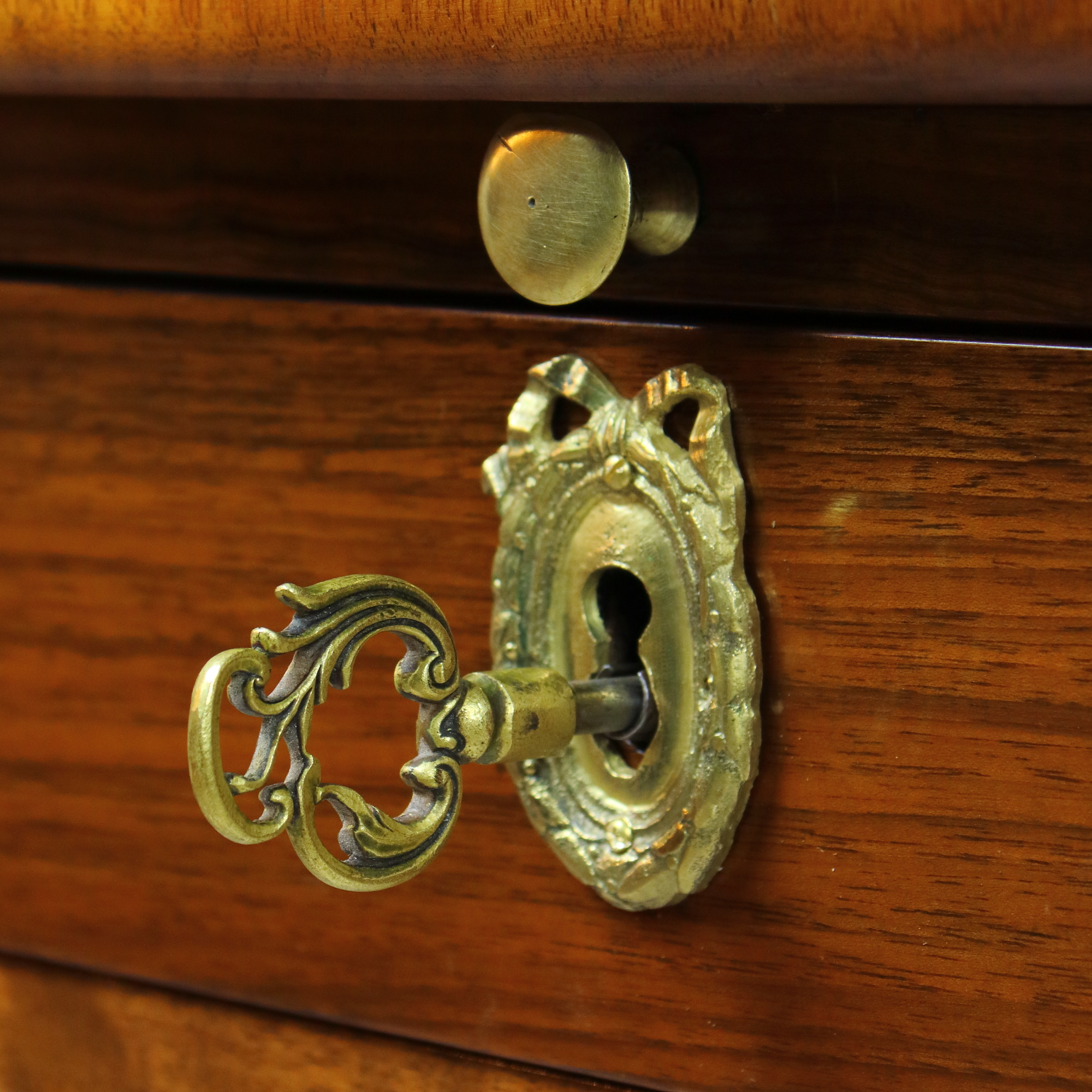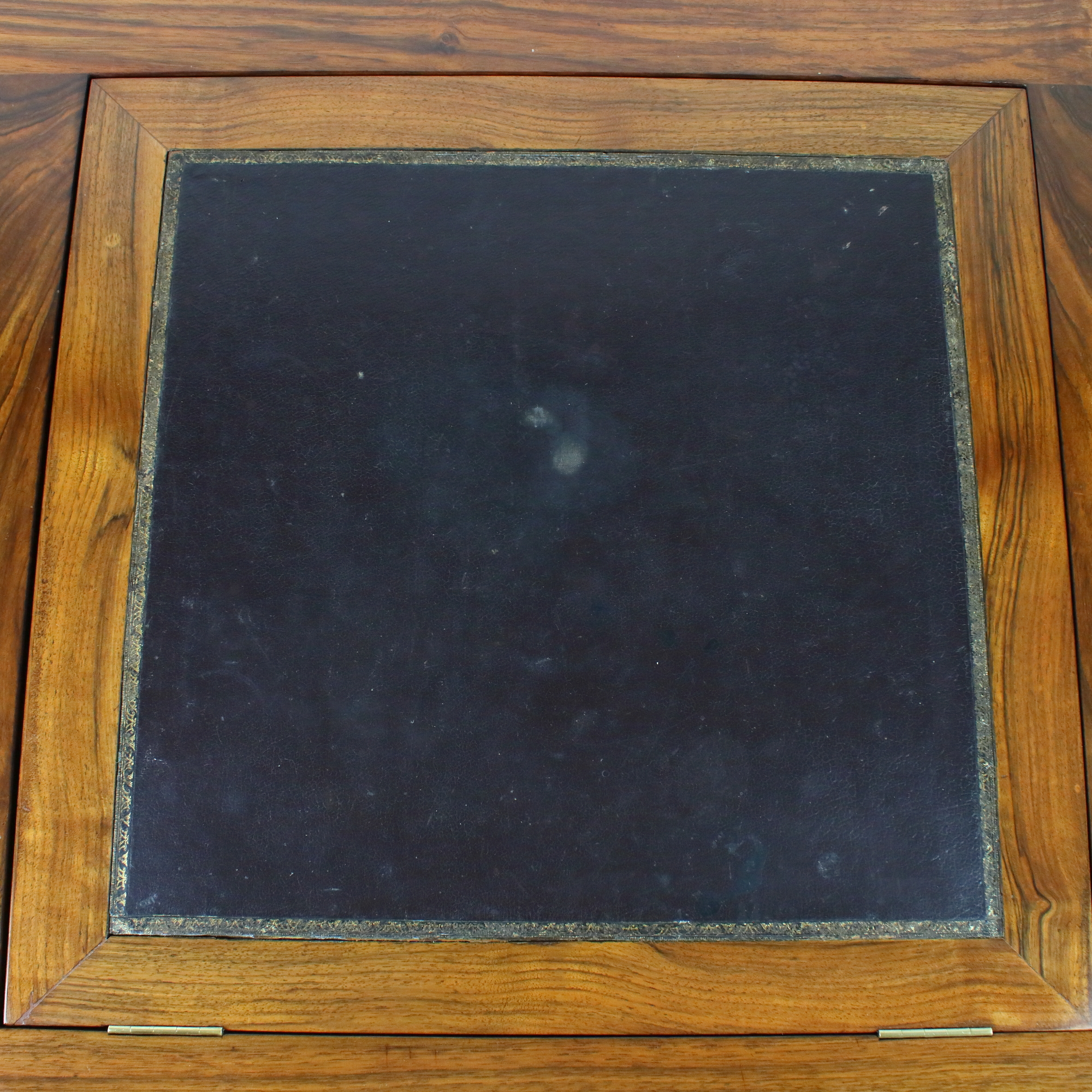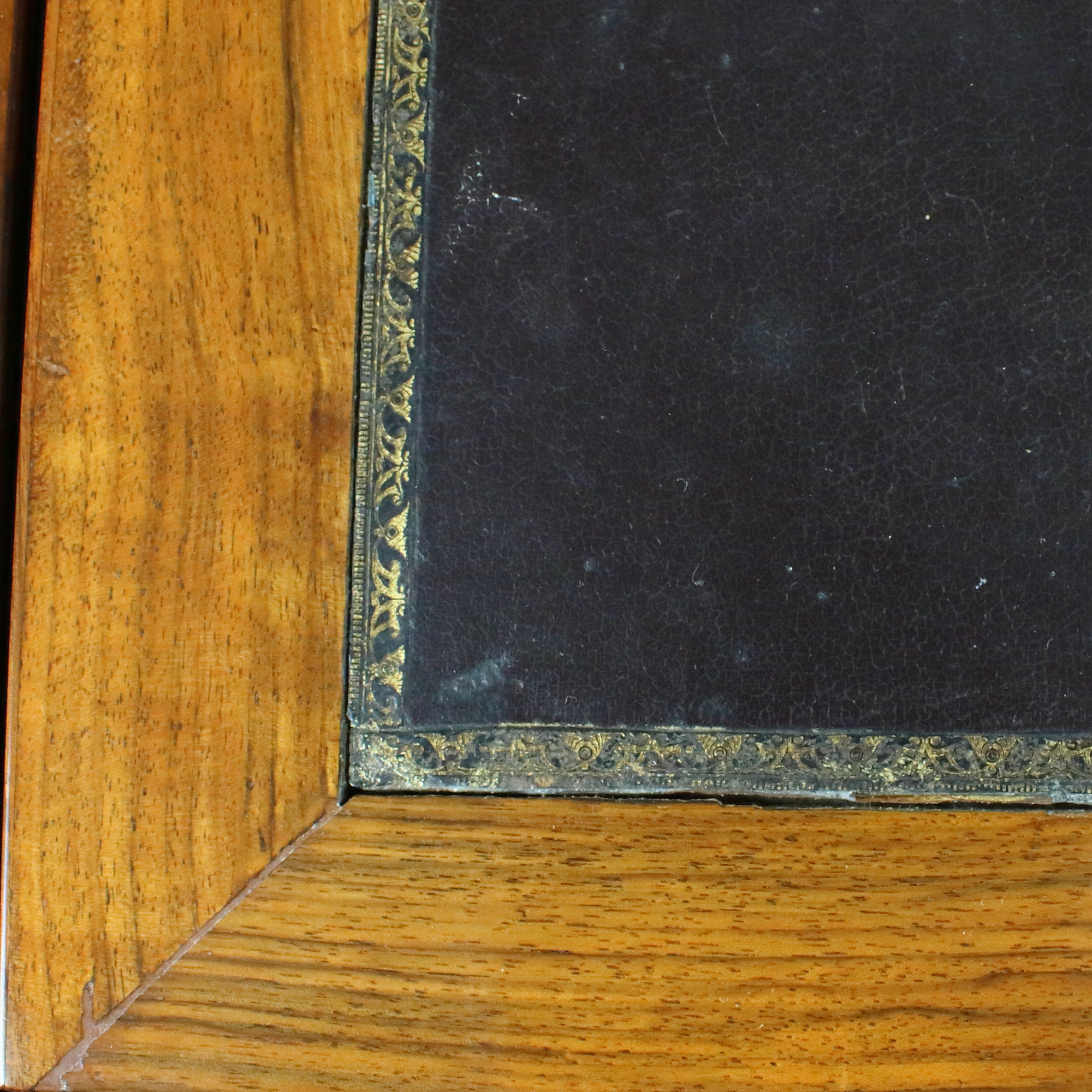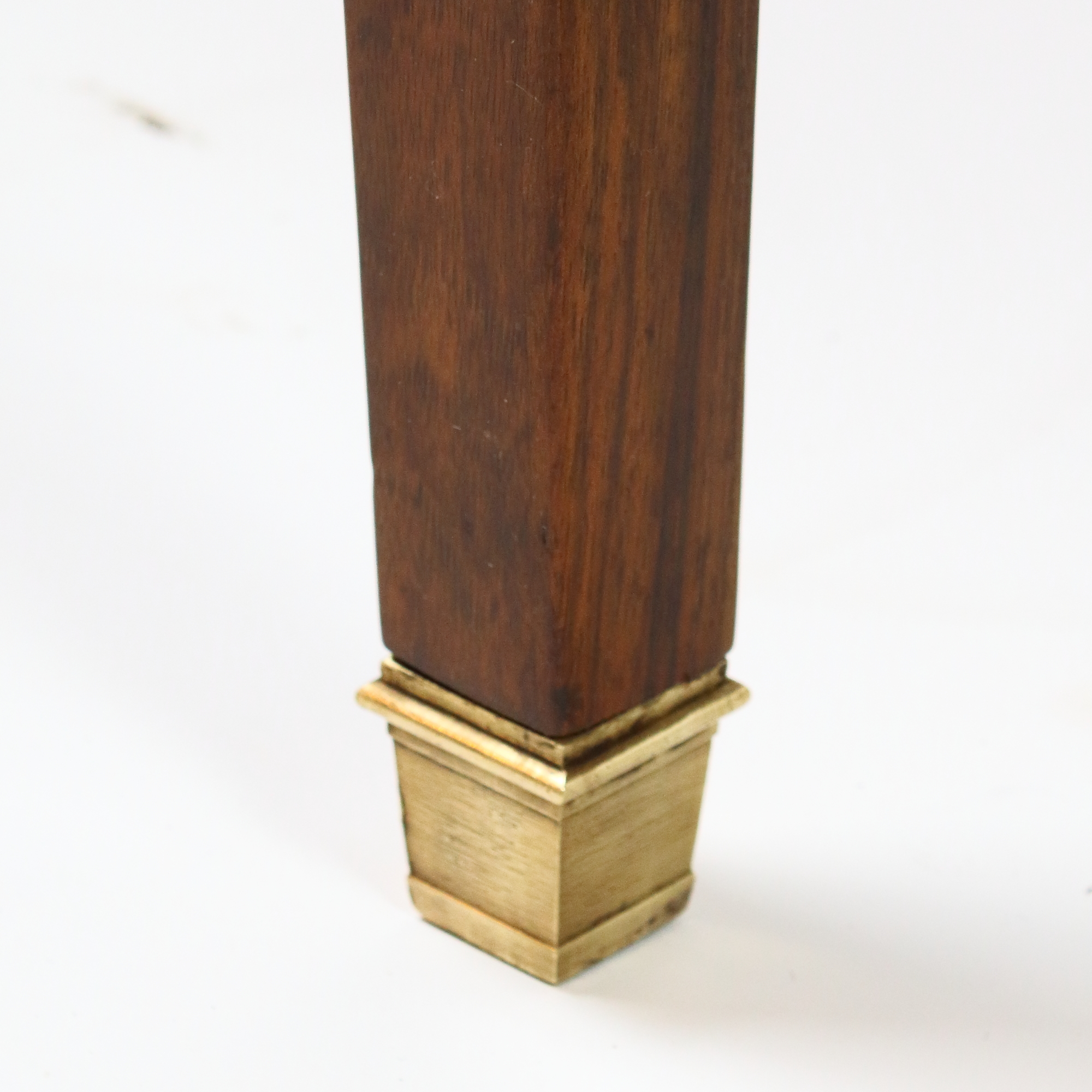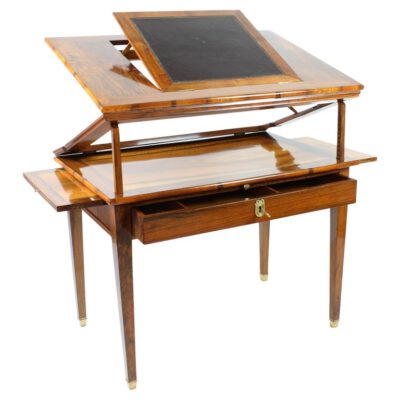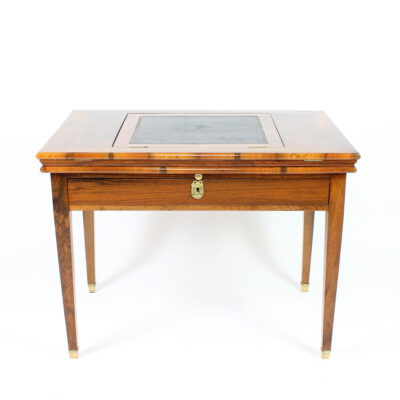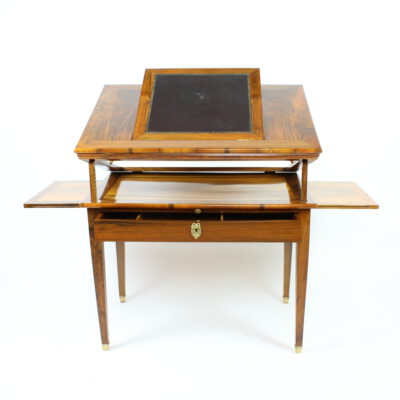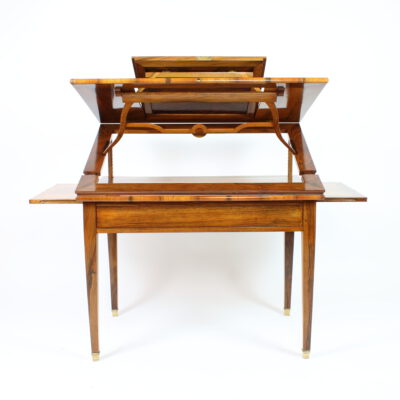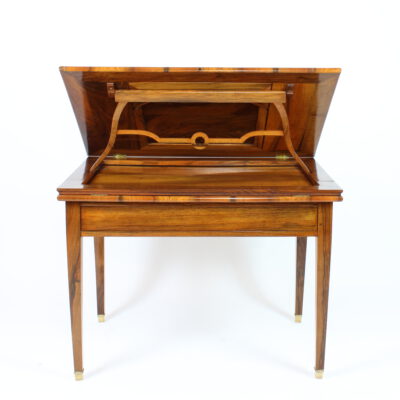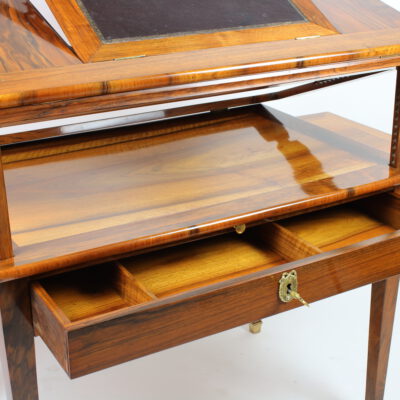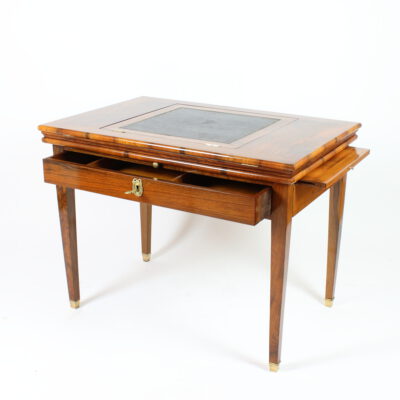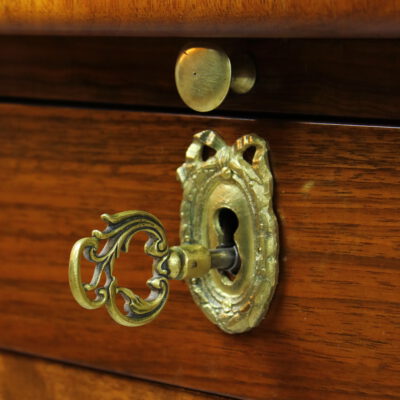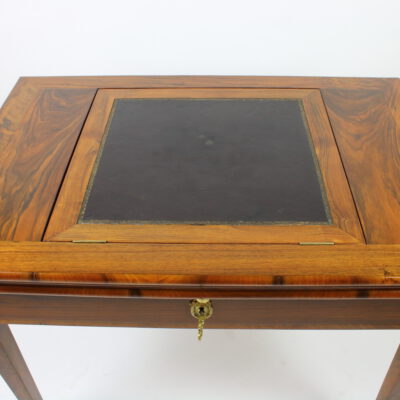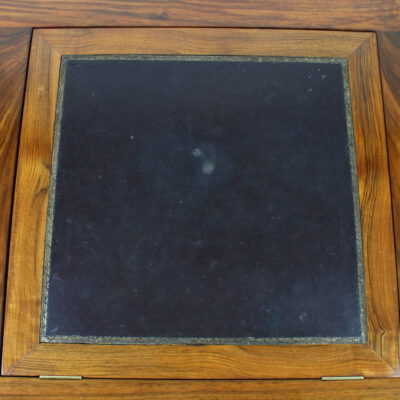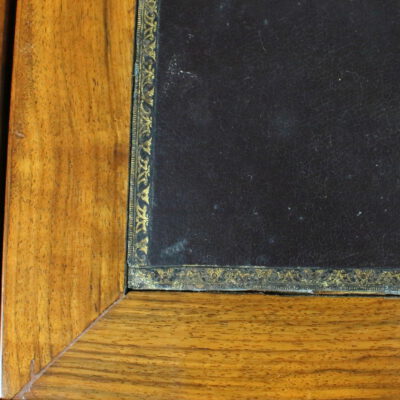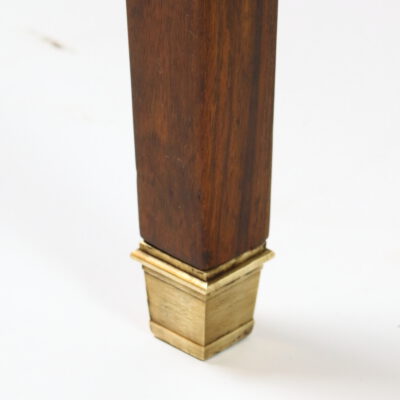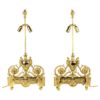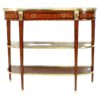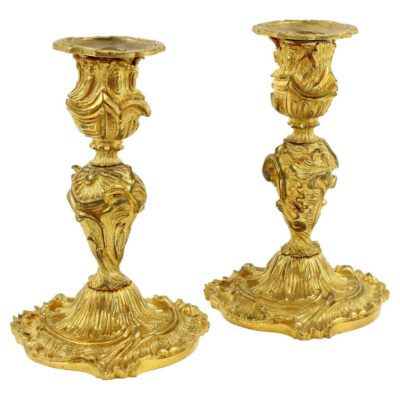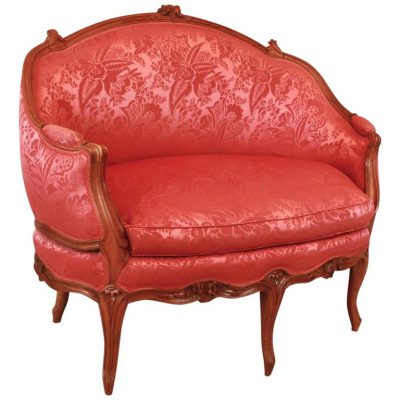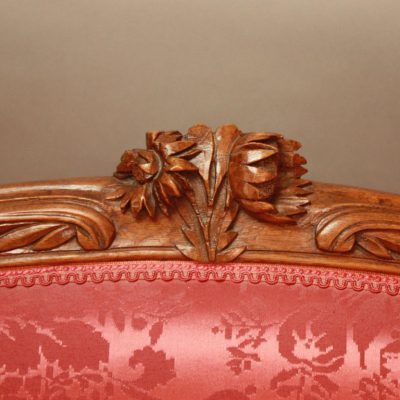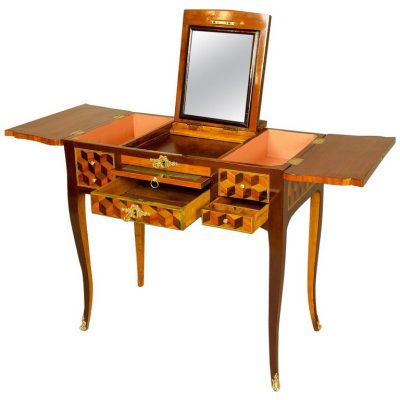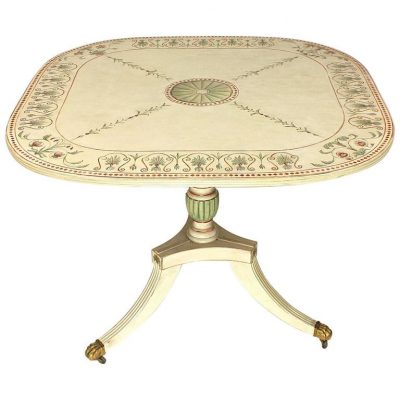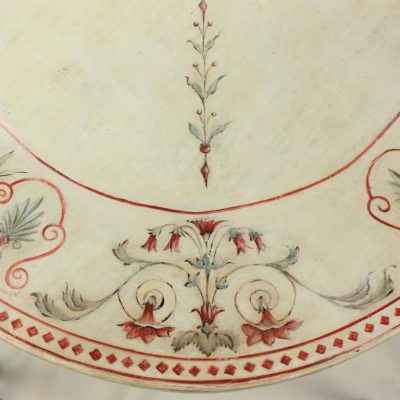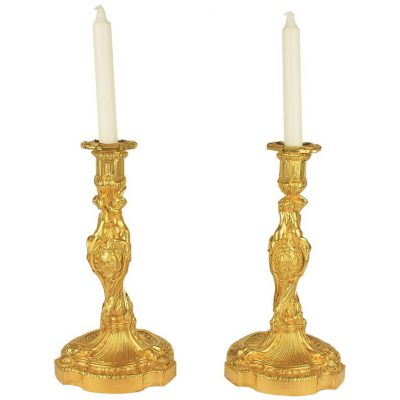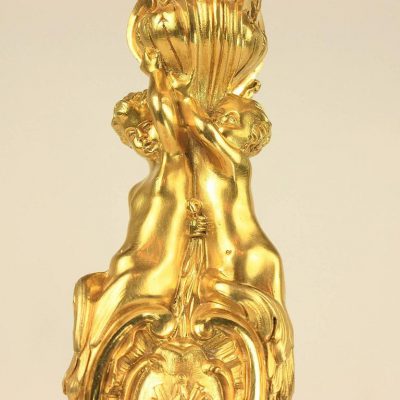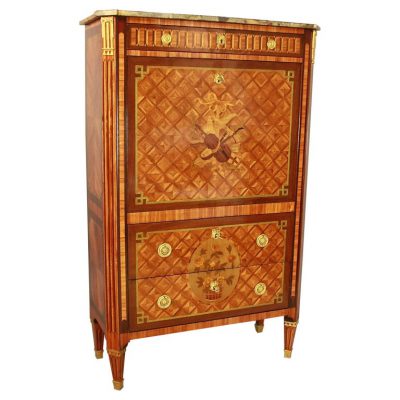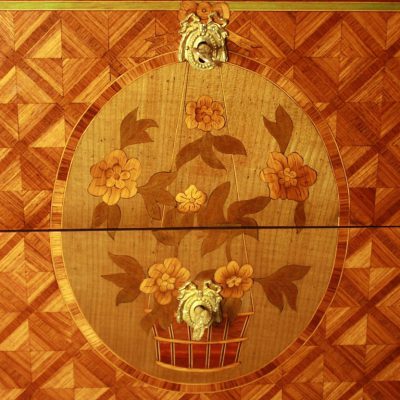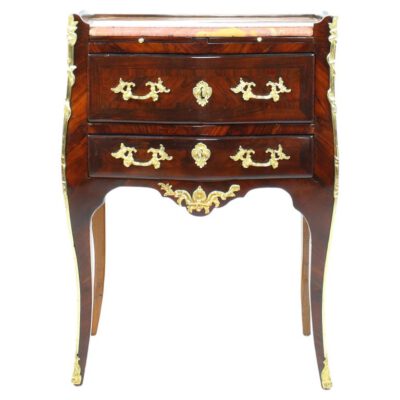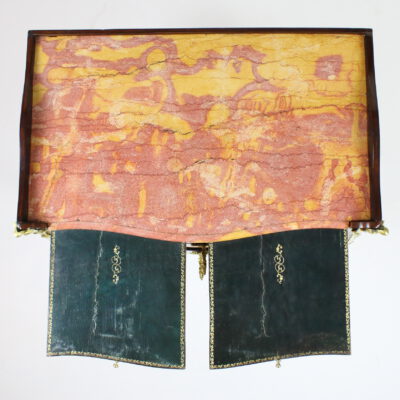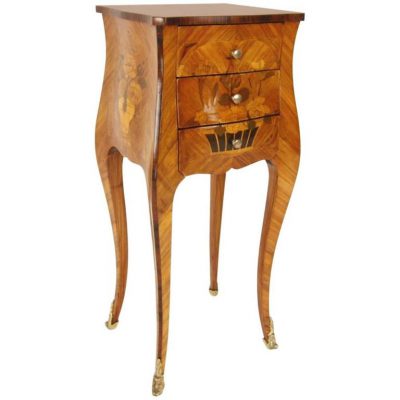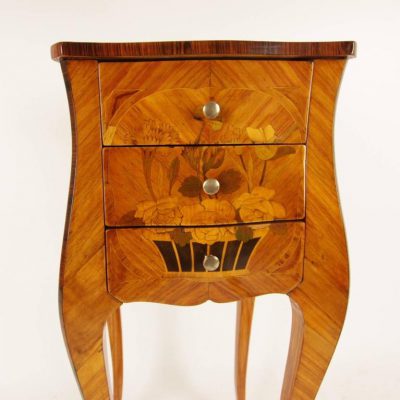A late 18th century Louis XVI walnut architect’s or mechanical table with a double-hinged ratcheted top comprising an original gold-tooled black leather lined writing plate, which can be changed in position, veneered in walnut of beautiful warm color. Above the long and lockable frieze drawer a central small brass button that enables the mechanism for adjusting the height and angle of the writing surface. The interior of the frieze drawer is fitted with three compartments for stationary. At both sides of the table, candle slides with walnut veneered tops underneath the tabletop can be pulled outward to hold candlesticks. The square, tapering legs with gilt bronze block feet. Closed, the architect’s table appears as an elegant Louis XVI bureau plat or center table.
This architect’s table is also known as a ‘table à la Tronchin’ after Théodore Tronchin (Genf 1709- Paris 1781), an unconventional but influential 18th-century Swiss physician who advised a sluggish aristocrat “to write at a raised desk, while resting against a tall stool”. His popularity spread amongst European royalty and the upper classes. The greatest cabinetmakers of the time, such as Jean-Henri Riesener (1734-1806) and David Roentgen (1743-1807) designed versions of this type of table differing only in the degree of their embellishment, the materials used and the round or square shape of the legs.
Comparative literature: Kjellberg, Pierre: Les meubles Francais du 18ie sie`cle, Paris 2008, p. 189 (here mistakingly called ‘Claude’ Chapuis instead of Jean-Joseph Chapuis, Claude was not a cabinetmaker but a trader)

